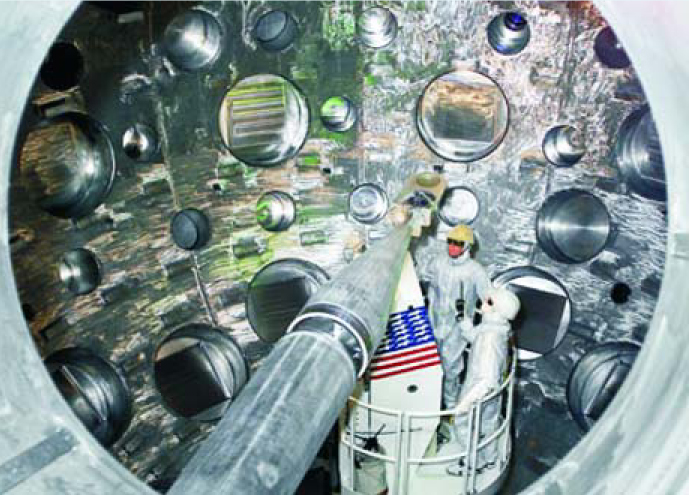NIF Threatened with Closure
DOI: 10.1063/1.2062910
After battling technical challenges and cost overruns, the $3.5 billion National Ignition Facility (NIF) at Lawrence Livermore National Laboratory in California is 80% complete. Three recent independent reviews of the US Department of Energy (DOE) facility say it is well managed and on schedule to meet a 2010 deadline to attempt fusion ignition. But political maneuverings in the Senate threaten to shut down the project.
On 30 June, in a late-night showdown, Senator Pete Domenici (R-NM), chair of the Water and Energy Appropriations Subcommittee, succeeded in cutting $224 million from the $337 million fiscal-year 2006 budget request for NIF. The proposed cut would cancel construction work on the project, on which $2.8 billion has already been spent. Moreover, $50 million is included in the proposed budget to close out NIF.
Matt Letourneau, Domenici’s spokesperson, insists that “the senator wants to see what scientific experiments can be carried out at NIF…. The intention is not to kill it. And it is certainly not the case that the senator is being provincial.” But in the budget Domenici added more than $33 million for fusion-related activities, the majority of which went to research for the New Mexico–based Z machine at Sandia National Laboratories.
As planned, the finished NIF would be the world’s most powerful laser facility. By firing 192 laser beams simultaneously into a small pellet target containing tritium and deuterium, NIF would re-create the conditions inside a nuclear explosion or the Sun (see Physics Today, April 2005, page 22
The uncertainty is hurting morale at NIF. Last year, 300 researchers were laid off after Congress cut the 2005 construction budget by $25 million. A recent DOE report hints that retaining staff is becoming a problem. “The funding provided in the Senate appropriation would require that the NIF project be shut down and abandoned in place, without the ability to operate even the four completed laser beams,” says Edward Moses, NIF’s acting associate director. “Significant employment reductions would result in the loss of NIF’s critical skills and knowledge base that are the product of 40 years of work in this field,” he adds.
The proposed cuts are also at odds with the stated goals of both the Bush administration and Representative David Hobson (R-OH), who sponsored HR 2419, the House version of the proposed FY 2006 water and energy budget. But Domenici says that NIF is taking up too much of the National Nuclear Security Administration’s budget, which is scheduled to shrink by $3 billion over the next five years. “NIF construction cannot come at the expense of all the other stewardship programs,” he says. “NIF is just one of many tools that must be supported.” During the summer, members of the House and Senate, led by Hobson and Domenici, will try to achieve a compromise on the spending bill.

NIF technicians may soon be out of a job.
LLNL

More about the Authors
Paul Guinnessy. pguinnes@aip.org

